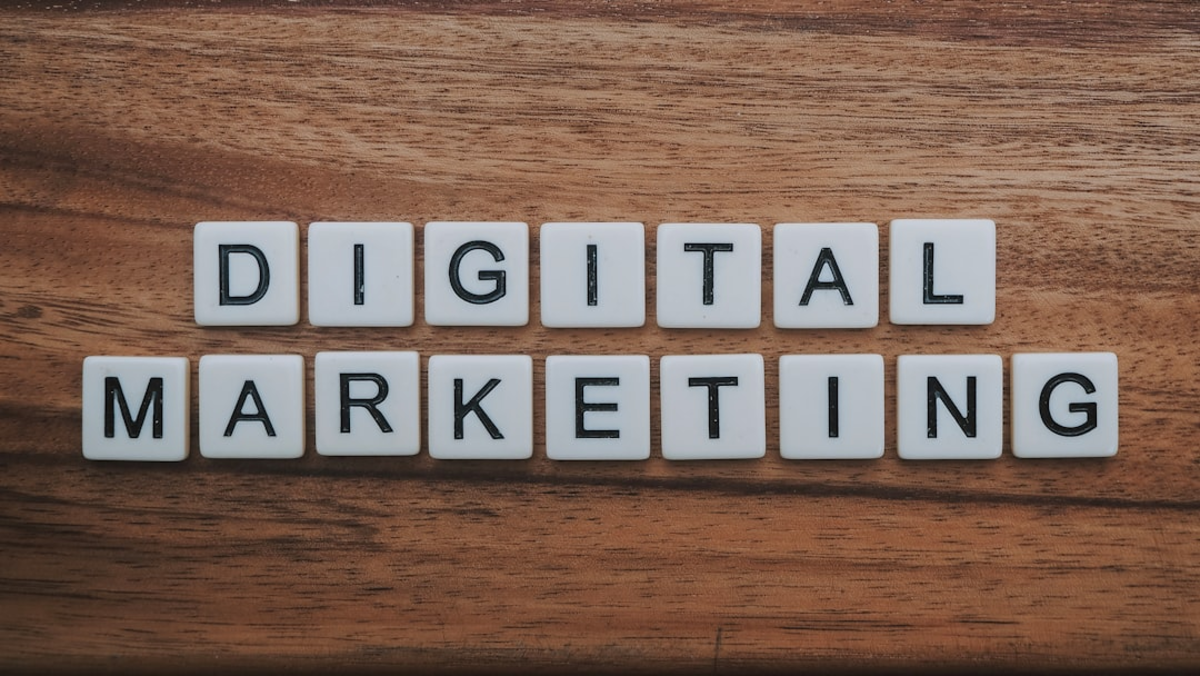SEM vs. SEO: Decoding Search Marketing Strategies for Optimal Results

In the quest for online visibility and customer acquisition, businesses often encounter a confusing alphabet soup of marketing acronyms. Among the most pivotal, yet sometimes misunderstood, are SEM and SEO. Both Search Engine Marketing (SEM) and Search Engine Optimization (SEO) are integral components of a comprehensive digital marketing strategy, designed to enhance a website's presence on search engine results pages (SERPs) like Google and Bing. However, they represent distinct approaches with different methodologies, timelines, and cost implications. Understanding the nuances between SEM and SEO, their respective strengths and weaknesses, and how they can potentially complement each other is crucial for businesses aiming to make informed decisions and allocate their marketing resources effectively for optimal results. This guide will decode these two powerful search marketing strategies, providing a clear comparison to help you determine which approach – or combination of approaches – is right for your specific business goals, budget, and timeline. We will delve into the core principles of SEO, focusing on its organic, long-term nature aimed at building sustainable authority and driving unpaid traffic. Conversely, we will explore SEM, primarily its paid advertising component (Pay-Per-Click or PPC), which offers immediate visibility and highly targeted campaigns. We'll examine the pros and cons of each, considering factors such as speed of results, cost per acquisition, sustainability, and the type of traffic generated. Furthermore, we'll discuss scenarios where one might be favored over the other, and more importantly, how a synergistic approach integrating both SEO and SEM can often yield the most powerful and comprehensive impact on your overall search marketing performance. By the end of this exploration, you will have a clearer understanding of SEM and SEO, enabling you to craft a more strategic and effective plan to conquer the search landscape and connect with your target audience in the most impactful way, ensuring your brand not only gets found but thrives in the competitive digital marketplace by making an educated choice based on your unique circumstances and long-term vision.
Understanding SEO (Search Engine Optimization): The Organic, Long-Term Approach
Search Engine Optimization (SEO) is the art and science of optimizing your website and its content to rank higher in the organic (non-paid) search results of search engines like Google, Bing, and DuckDuckGo. The primary goal of SEO is to attract high-quality, relevant traffic to your website naturally, without paying directly for ad placements. It's a multifaceted discipline that encompasses a wide range of on-page, off-page, and technical strategies, all aimed at improving your site's visibility and credibility in the eyes of search engines.
Core Components of SEO:
*
On-Page SEO:
This involves optimizing individual web pages to rank higher and earn more relevant traffic. Key elements include: thorough keyword research to understand user search queries; crafting high-quality, valuable content that addresses user intent; optimizing title tags, meta descriptions, and header tags (H1-H6) with target keywords; ensuring a logical URL structure; optimizing images with alt text; and creating a strong internal linking structure to help search engines and users navigate your site. *
Off-Page SEO:
These are activities performed outside your own website to build its authority and reputation. The most significant aspect of off-page SEO is link building – acquiring high-quality backlinks from other reputable and relevant websites. Other off-page factors include brand mentions, social signals (though indirect), and online reputation management. *
Technical SEO:
This focuses on ensuring your website can be efficiently crawled and indexed by search engines and that it provides a good user experience. Key technical SEO aspects include website speed and performance (Core Web Vitals), mobile-friendliness (responsive design), site architecture, XML sitemaps, robots.txt file configuration, SSL/HTTPS implementation for security, and structured data (schema markup) to help search engines understand your content better.
Goals and Timeline:
The overarching goal of SEO is to achieve sustainable, long-term organic traffic growth, establish topical authority in your niche, and build brand credibility. SEO is generally considered a long-term strategy; significant results often take months, or even longer, to materialize, especially in competitive industries.
Pros of SEO:
*
Cost-Effective Over Time:
While SEO requires an upfront investment of time and resources (or budget if outsourcing), organic traffic is essentially 'free' once you achieve high rankings, leading to a lower cost per acquisition in the long run compared to paid ads. *
Builds Trust and Credibility:
Users often perceive organic search results as more credible and trustworthy than paid advertisements. Ranking high organically can significantly enhance your brand's reputation. *
Sustainable Results:
Well-executed SEO can lead to lasting visibility and traffic, even if you temporarily pause active optimization efforts (though continuous effort is recommended). *
Targets the Entire Funnel:
SEO can attract users at all stages of the customer journey, from awareness to consideration and decision, by targeting a wide range of informational, navigational, and transactional keywords. *
Improved User Experience:
Many SEO best practices, such as fast load times, mobile-friendliness, and clear navigation, directly contribute to a better user experience for all visitors.
Cons of SEO:
*
Time-Consuming:
Achieving significant SEO results requires considerable time, effort, and patience. *
Algorithm Changes:
Search engine algorithms are constantly evolving, which can sometimes lead to fluctuations in rankings. Strategies need to be adapted accordingly. *
No Guarantee of Rankings:
Despite best efforts, there's no absolute guarantee of achieving specific rankings, especially for highly competitive keywords. *
Requires Ongoing Effort:
SEO is not a one-time task; it requires continuous monitoring, analysis, content creation, and optimization to maintain and improve rankings. Understanding these facets of SEO is the first step in appreciating its role in a holistic search marketing strategy.

Understanding SEM (Search Engine Marketing): The Paid, Immediate Impact Approach (PPC)
Search Engine Marketing (SEM) is a broader digital marketing strategy aimed at increasing a website's visibility in search engine results pages (SERPs). While SEO is a component of SEM (focused on organic visibility), the term SEM is now most commonly used to refer specifically to paid search advertising, also known as Pay-Per-Click (PPC) advertising. Platforms like Google Ads and Microsoft Advertising (formerly Bing Ads) are the primary channels for PPC campaigns.
Core Components of PPC (as part of SEM):
*
Keyword Bidding:
Advertisers bid on specific keywords relevant to their business or offerings. When a user searches for one of these keywords, their ad may appear in the sponsored results section of the SERP (usually at the top or bottom of the page). *
Ad Creation:
Advertisers create compelling ad copy (headlines, descriptions, display URLs) designed to attract clicks from their target audience. Ads can also include extensions like site links, callouts, location information, and phone numbers to provide more information and improve visibility. *
Campaign Management:
This involves structuring campaigns and ad groups effectively, setting budgets, choosing bidding strategies (e.g., cost-per-click (CPC), cost-per-acquisition (CPA)), defining targeting parameters (location, demographics, device, time of day), and continuously monitoring and optimizing campaign performance. *
Landing Page Optimization:
The quality and relevance of the landing page (the page users arrive at after clicking an ad) are crucial for PPC success. Landing pages should be highly relevant to the ad copy and keywords, load quickly, and have a clear call-to-action to encourage conversions. *
Tracking and Analytics:
SEM campaigns are highly measurable. Advertisers can track clicks, impressions, click-through rates (CTR), conversion rates, cost per conversion, and return on ad spend (ROAS) to assess performance and make data-driven optimization decisions.
Goals and Timeline:
The primary goal of PPC advertising is typically to drive immediate, targeted traffic to a website to achieve specific actions, such as generating leads, making sales, or increasing brand awareness quickly. Results can be seen almost instantly once campaigns are launched.
Pros of SEM/PPC:
*
Immediate Visibility and Traffic:
Unlike SEO, PPC campaigns can start driving traffic to your website within minutes or hours of launching. This is ideal for new businesses, product launches, or time-sensitive promotions. *
Precise Targeting:
PPC platforms offer sophisticated targeting options, allowing advertisers to reach users based on their keywords, location, demographics, interests, device type, time of day, and even past Browse behavior (remarketing). *
Highly Measurable and Controllable:
Every aspect of a PPC campaign can be tracked, measured, and analyzed, providing clear insights into ROI. Budgets can be tightly controlled, and campaigns can be paused or adjusted at any time. *
A/B Testing Capabilities:
PPC platforms make it easy to A/B test different ad copy, keywords, bidding strategies, and landing pages to continually improve performance. *
Complements SEO:
PPC can be used to test keyword effectiveness before investing in long-term SEO efforts for those terms. It can also fill visibility gaps while SEO efforts are ramping up.
Cons of SEM/PPC:
*
Cost:
PPC advertising operates on a pay-per-click model, meaning you pay every time someone clicks on your ad. Costs can add up quickly, especially for competitive keywords. *
Traffic Stops When Ads Stop:
Unlike SEO, once you stop paying for ads, the traffic from those campaigns ceases. It's a continuous expense to maintain visibility. *
Ad Blindness/Skepticism:
Some users are wary of paid ads and may intentionally ignore them or trust organic results more. *
Requires Ongoing Management:
Effective PPC campaigns require constant monitoring, analysis, and optimization to maintain performance and control costs. Neglected campaigns can quickly become inefficient. Understanding the distinct characteristics of SEM, particularly its PPC component, allows for a clearer comparison with the organic efforts of SEO.

Making the Strategic Choice: Factors to Consider and the Power of Integration
Deciding whether to prioritize SEO, SEM (PPC), or a combination of both depends heavily on your specific business circumstances, goals, resources, and market conditions. There's no one-size-fits-all answer, but by carefully considering several key factors, you can make a more informed strategic choice.
Factors to Consider When Choosing Between SEO and SEM:
*
Budget:
If your marketing budget is very limited, SEO might be a more appealing long-term strategy, as it focuses on earning 'free' organic traffic. However, it requires a significant investment of time and effort (or budget if outsourcing to an agency/consultant). SEM/PPC offers more immediate results but requires an ongoing ad spend. You can start PPC with a small budget, but competitive keywords can be expensive. *
Business Goals and Objectives:
Are you aiming for immediate sales and leads, or are you focused on building long-term brand authority and sustainable traffic? For rapid results and specific promotions, SEM/PPC is often more effective. For building a lasting online presence and organic growth, SEO is crucial. *
Timeline for Results:
If you need to see results quickly (e.g., for a new product launch or a seasonal campaign), SEM/PPC can deliver almost instant visibility. SEO, on the other hand, is a slower burn, often taking several months to show significant impact. *
Industry Competitiveness:
In highly competitive industries, achieving top organic rankings through SEO can be extremely challenging and time-consuming. SEM/PPC can provide a way to gain visibility quickly, even in crowded markets. Conversely, if PPC costs in your industry are prohibitively high, investing in SEO might be a more sustainable approach. *
Website Age and Authority:
New websites with little to no existing authority may find it difficult to rank organically quickly. SEM/PPC can provide initial traffic and visibility while SEO efforts build up over time. Established websites with good authority might leverage SEO more heavily. *
Long-Term vs. Short-Term Strategy:
SEO is fundamentally a long-term investment that builds equity over time. SEM/PPC is often used for shorter-term campaigns or as a consistent lead generation tool, but its benefits cease when the ad spend stops.
The Power of Integration: SEO and SEM Working Synergistically:
Often, the most powerful approach is not to choose between SEO and SEM, but to integrate them into a cohesive search marketing strategy. They can complement each other in several ways: *
Keyword Data Sharing:
PPC campaigns can quickly generate data on which keywords convert best. This data can then inform your SEO content strategy, helping you target the most profitable keywords for organic ranking. Conversely, SEO keyword research can uncover long-tail opportunities for more targeted PPC campaigns. *
Dominating SERPs:
By having both strong organic rankings (SEO) and prominent paid ads (SEM) for important keywords, you can significantly increase your overall visibility and click-through rate on the SERPs, effectively 'owning' more digital real estate. *
Remarketing:
You can use PPC remarketing campaigns to target users who previously visited your site organically (found via SEO) but didn't convert. This gives you a second chance to engage them. *
Testing and Optimization:
Use PPC to test the effectiveness of different headlines, calls-to-action, and landing page variations quickly before implementing them site-wide for SEO benefits. *
Filling Gaps:
SEM can target keywords that are too competitive or difficult to rank for organically in the short term, while SEO works on long-term authority for those terms. Ultimately, the decision involves a careful assessment of your unique needs. Many businesses find that a balanced, integrated strategy that leverages the immediate impact of SEM/PPC while building the sustainable foundation of SEO yields the best overall results.

Crafting a Holistic Search Strategy: Integrating SEO and SEM for Maximum Impact
In decoding the complexities of SEM vs. SEO, it becomes clear that these two pillars of search marketing, while distinct in their mechanics and immediate outcomes, are not mutually exclusive. Instead, they represent complementary forces that, when strategically integrated, can create a far more powerful and resilient online presence than either could achieve in isolation. SEO, with its focus on organic growth, builds long-term authority, credibility, and a sustainable flow of high-quality traffic. It's an investment in your brand's digital foundation, fostering trust and providing enduring value. SEM, primarily through its PPC component, offers agility, immediacy, and precise control, enabling businesses to capture targeted audiences, respond rapidly to market opportunities, and generate measurable results quickly. The optimal path for most businesses involves moving beyond an 'either/or' mindset and embracing a holistic search strategy that harnesses the unique strengths of both. By allowing SEO and SEM to inform and amplify each other – using PPC data to refine SEO keyword strategies, leveraging organic content to improve PPC ad quality scores, and employing remarketing to bridge the gap between organic visitors and conversions – businesses can achieve a synergistic effect. This integrated approach allows for greater SERP dominance, improved overall click-through rates, and a more robust defense against competitor actions and algorithm fluctuations. The key lies in aligning your chosen strategies with your overarching business objectives, available resources, and the specific dynamics of your industry. Whether you lean more heavily on SEO for its long-term cost-effectiveness and authority-building, or utilize SEM for its rapid impact and precise targeting, or ideally, weave them together, the goal remains the same: to connect with your audience effectively at various stages of their journey and drive meaningful outcomes for your business. By understanding the distinct roles and potential synergies of SEM and SEO, you are better equipped to craft a sophisticated, data-driven, and ultimately more successful search marketing future that maximizes your visibility and impact in the ever-evolving digital landscape.